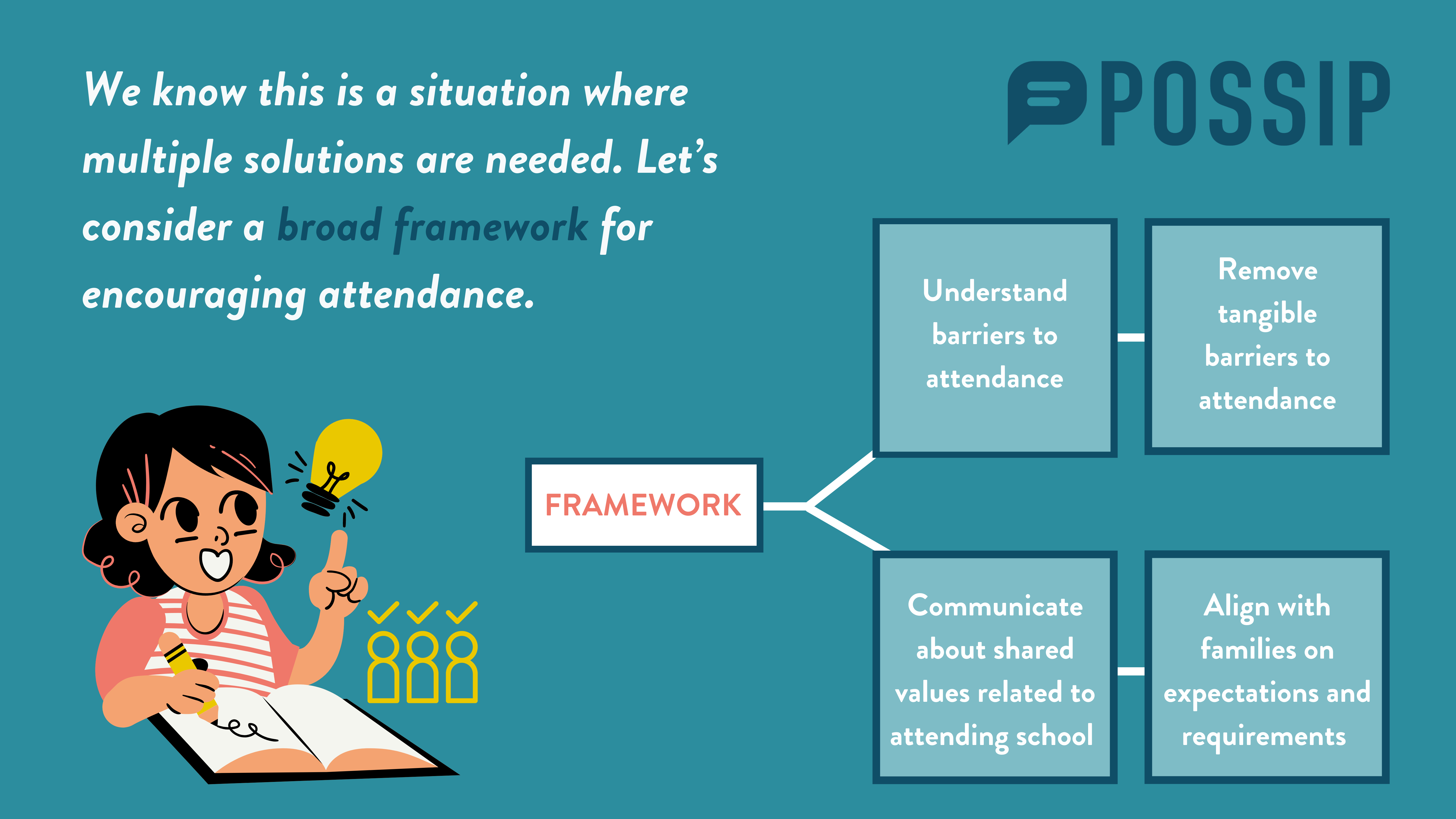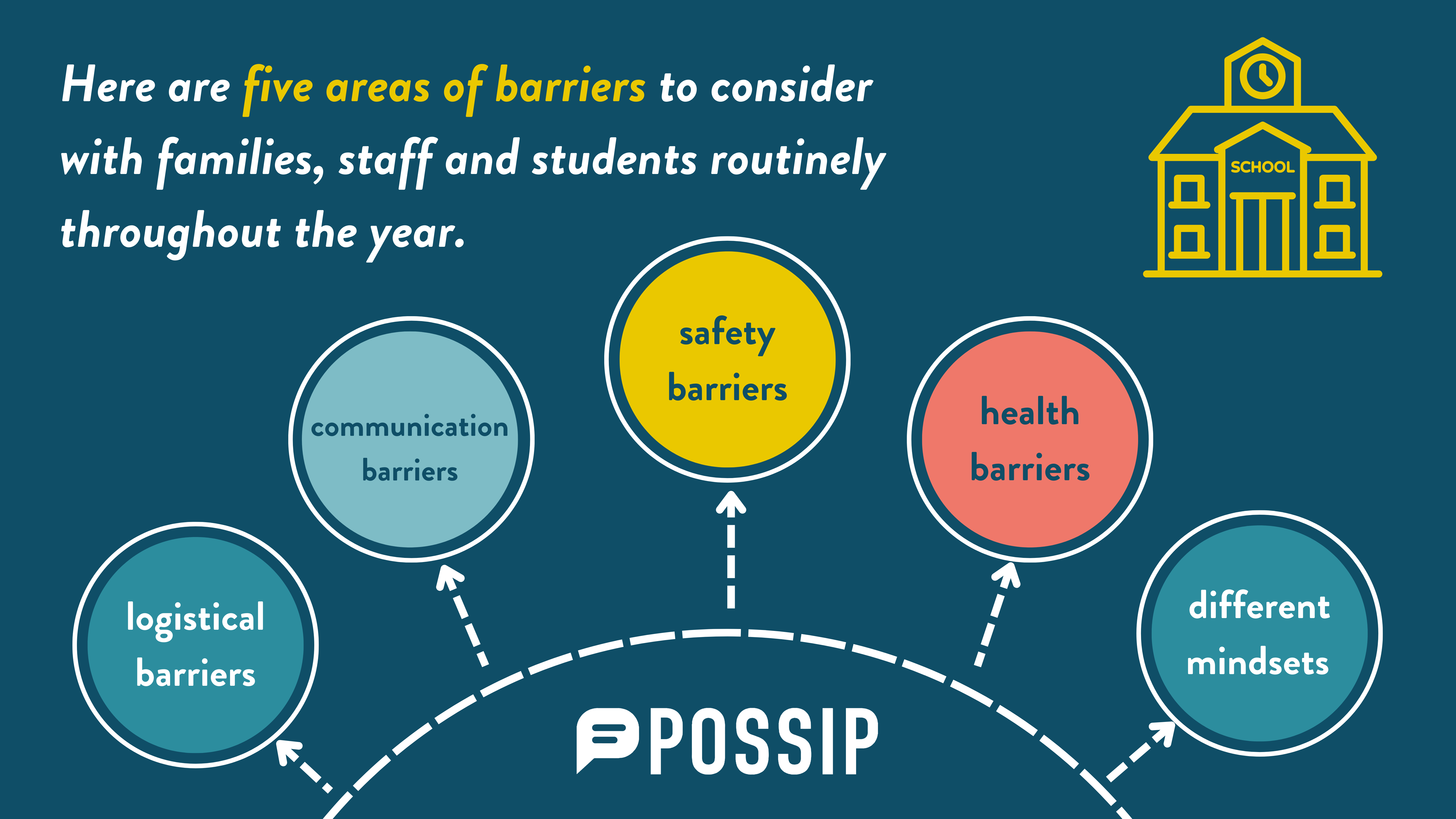Caitlin Churchill, Possip’s Community Director, provides tips to maximize attendance in your schools!
“When the going gets tough, the tough get going,” is a motto sometimes used to celebrate kids with perfect attendance.
In reality, when things are hard, it is harder to keep people in school. Policies and laws, metrics on academic performance, among other things, reinforce the message that every kid should be in school every day possible. However, looking back at history there are all kinds of circumstances that have made it hard for people to attend school – families lacking resources, zoning and discriminatory regulations, unreasonable distances, unsafe transportation conditions, and unwelcome environments for many.
It’s not surprising that people need support and motivation to get to school. It’s not surprising that when things get tough (insert: unsafe, unkind, inconvenient), people might not show up or lean into difficult situations.
There are real tangible factors influencing attendance – physical and mental health, transportation, safety and communication – and Possip’s new Attendance Checks help districts and schools uncover which factors have become barriers to individual families.
This January 24th, Possip will gather with educators to talk about improving attendance. We know this is a situation where districts and schools need multiple solutions to:
1) more fully understand and address barriers,
2) and shift mindsets so that families, kids and teachers agree it is important to show up for school.
Let’s consider a broad framework for improving attendance.
A: Understand barriers to attendance
B: Remove tangible barriers to attendance
C: Communicate about shared values related to attending school
D: Align with families on expectations and requirements
Here are five areas of barriers to consider with families, staff and students routinely throughout the year.
-
There may be logistical barriers related to a caregiver’s ability to get a student to school such as the ability to afford transportation or help a student get to a bus. Parents may have competing commitments with work or caretaking and are unable to focus on logistics for a school-aged child.
-
There may be communication barriers that influence whether a parent is fully informed about attendance expectations or able to communicate needing assistance. This could be due to cultural or language differences. It’s possible that families have also received conflicting information or noticed conflicting mindsets toward attendance from teachers, children or fellow parents.
-
There may be health barriers that are either physical or mental impacting the student or family members responsible for getting the student to school. There may also be concerns about illnesses spreading in school, or that a school environment is impacting a student’s emotional well-being.
-
There may be safety barriers. There was an illuminating moment in last month’s conversation on safety when mental health counselor Malené Dixon, formerly at KIPP Sunnyside, said, “If students don’t feel safe, they aren’t going to school.” Similarly, if parents don’t feel their students are safe, they aren’t going to send them to school. Addressing school safety – including bullying and disciplinary concerns – will impact how families and staff feel about being present.
-
Last, there may be different mindsets about the importance and value of attending school. These mindsets may be determined by the families’ level of engagement with teachers and administrators, cultural points of view, or even how students and families feel about their academic progress and the value of time spent in class. In these and other ways, mindsets could become a barrier to attendance.
Here are some resources for removing barriers.
(Peer educators will talk through their favorite approaches to addressing attendance barriers on January 24th and you are invited – RSVP now to join the conversation!)
-
Addressing transportation barriers: Possip reporter Virginia Williams gives helpful insights on tackling car line at your school.
-
Addressing communication barriers: Possip Reporter Savannah Staley shares communication plans and templates (see #7).
-
Addressing health barriers: The pandemic taught us a lot about establishing and communicating safe health practices in schools.
-
Addressing safety barriers: Possip CEO & Founder Shani Dowell provides a framework for safe schools and ways to communicate about safety.
Finally, it’s important to emphasize the final two aspects of the framework – communicating the value of attending school and aligning with families, staff and students on expectations and requirements. Aligning, like giving and receiving feedback, is a two-way street. Signing a handbook or statement of intent is not aligning. Alignment is active, personal, and affirming.
What can alignment look like?
-
Active – First, understand that barriers to attendance may be temporary and changing, or permanent. Use multiple methods including Possip Attendance Checks to create frequent, routine opportunities to talk about how attendance is going.
-
Personal – Make attendance a personal matter. In last year’s event on attendance, Monchiere’ Holmes-Jones, the CEO and Founder of MOJO Marketing + PR talked about how school culture and shared values greatly impact attendance and future enrollment. This year, we are reminding districts and schools that solutions to addressing barriers also need to be considered case-by-case.
-
Affirming – Last, affirm that families, staff, administration and students are aligned on procedures and mindsets. This can be accomplished through surveys like Possip Attendance Checks – which can help you receive feedback that expectations and requirements are understood, shared and valued.
We look forward to seeing you on January 24th when educators talk more about identifying and addressing attendance barriers and improving attendance!




